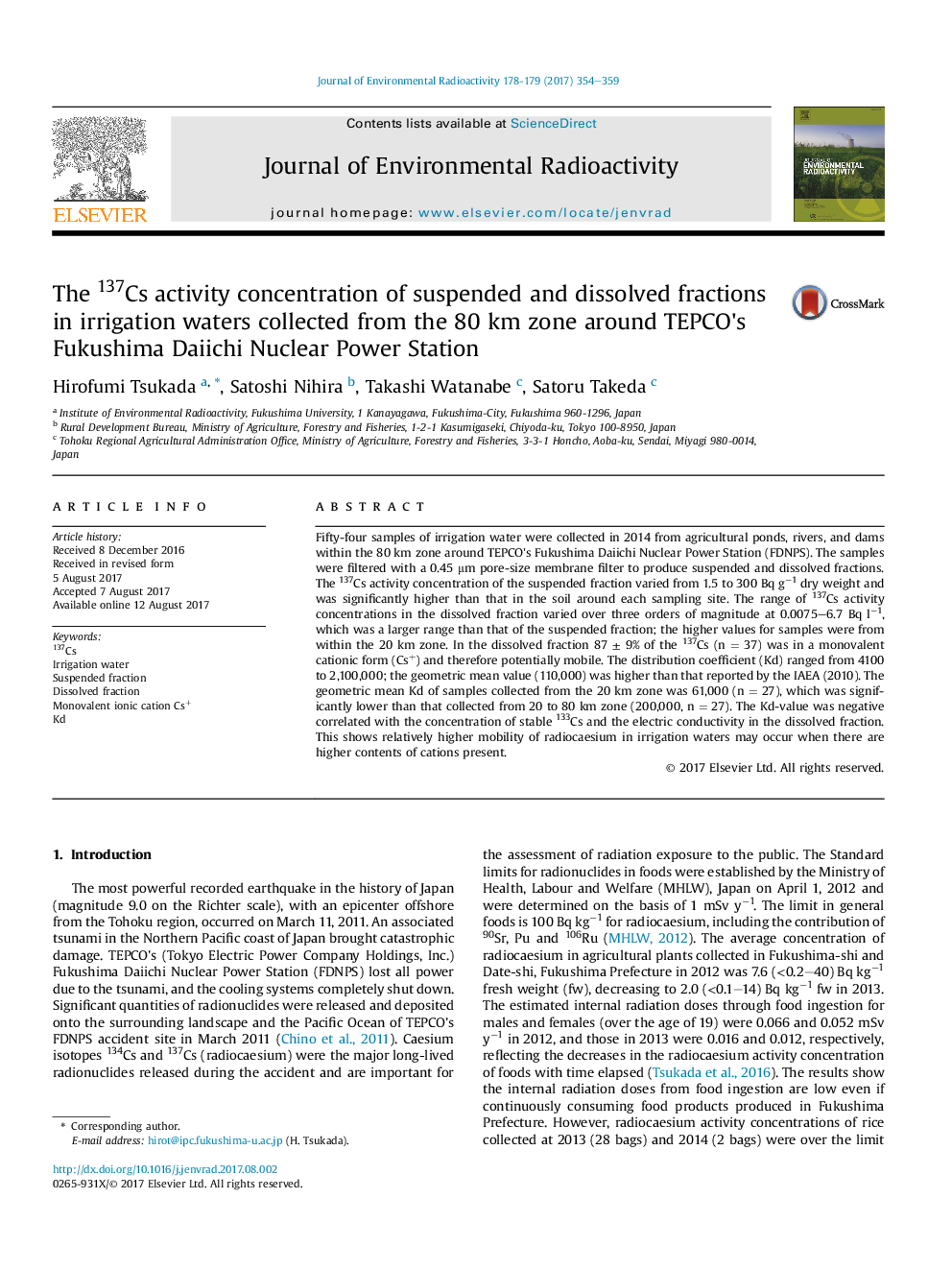| Article ID | Journal | Published Year | Pages | File Type |
|---|---|---|---|---|
| 8081020 | Journal of Environmental Radioactivity | 2017 | 6 Pages |
Abstract
Fifty-four samples of irrigation water were collected in 2014 from agricultural ponds, rivers, and dams within the 80 km zone around TEPCO's Fukushima Daiichi Nuclear Power Station (FDNPS). The samples were filtered with a 0.45 μm pore-size membrane filter to produce suspended and dissolved fractions. The 137Cs activity concentration of the suspended fraction varied from 1.5 to 300 Bq gâ1 dry weight and was significantly higher than that in the soil around each sampling site. The range of 137Cs activity concentrations in the dissolved fraction varied over three orders of magnitude at 0.0075-6.7 Bq lâ1, which was a larger range than that of the suspended fraction; the higher values for samples were from within the 20 km zone. In the dissolved fraction 87 ± 9% of the 137Cs (n = 37) was in a monovalent cationic form (Cs+) and therefore potentially mobile. The distribution coefficient (Kd) ranged from 4100 to 2,100,000; the geometric mean value (110,000) was higher than that reported by the IAEA (2010). The geometric mean Kd of samples collected from the 20 km zone was 61,000 (n = 27), which was significantly lower than that collected from 20 to 80 km zone (200,000, n = 27). The Kd-value was negative correlated with the concentration of stable 133Cs and the electric conductivity in the dissolved fraction. This shows relatively higher mobility of radiocaesium in irrigation waters may occur when there are higher contents of cations present.
Related Topics
Physical Sciences and Engineering
Energy
Nuclear Energy and Engineering
Authors
Hirofumi Tsukada, Satoshi Nihira, Takashi Watanabe, Satoru Takeda,
